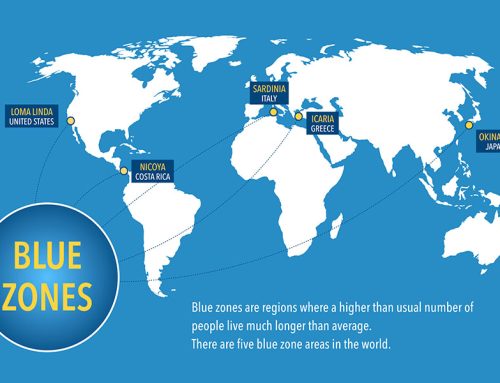Steps per day or minutes per day? How should you set your daily physical activity goal? This has become an increasingly common question for health-minded people. Of course I must digress briefly to say one thing about strength training first before I start talking about cardio training…

Lifting weights or at least some other kind of resistance training must be part of the exercise prescription if you want strength, total fitness, a nice physique, and a body that ages well. The ideal fitness program combines resistance training and cardio training.
3 to 5 days a week of lifting does the trick for most people, depending on your time available and goals. 60 to 75 minutes can be enough even if your goal is serious muscle building.
You can easily get it done in 30 minutes per session (35 to 40 max) with a time efficiency program like our T.N.B. Turbo with zero compromise in gains.
But let’s keep cardiovascular exercise (cardio) and overall physical activity the focus today.
Two Caveats About the 10,000 steps a day guideline
Counting steps with a fitness tracker (Fitbit, etc) is one way to quantify your physical activity. 10,000 steps per day is a popular goal, and it’s a good one that is now well-supported by research. However, there are two important things to know:
1. Research suggests that 7000 to 9000 steps per day is enough to get most of the health benefits. Do 10,000 steps per day and you do get a little more benefit, but not that much more.
Do even more, like 12,000, 14,000 or 16,000 steps per day and you get even more benefit, but now you’re reaching a point of diminishing returns so it’s not worth the time trade off for many people. Plus, few people can sustain more than 12,000 steps a day long term, so it’s not very realistic either.
If you’re pulling off 10,000+, consider yourself an over-achiever. (Or maybe you have a dog… that always seems to help. I love my cat, but he doesn’t need any walking. In fact, he often prevents me from walking by laying the full brunt of his weight on my chest).
2. If your steps are under 5,000 a day, you are in the sedentary category. This is not healthy. If you’re around 3000 or 3500 a day, you are very sedentary and that’s very unhealthy.
But good news: If you’re doing only 3000 a day, even if you only increase to 5000 or 6000 at first, the research also says you get significant health benefits from that. Later on, you can see if 7000 or more is realistic for you. But for starters, improvement is the important thing.
If Step Tracking Is Good, Why Do Health Organizations Prescribe Minutes Per Day?
Now, what has confused a lot of people is they started daily tracking steps, but then later heard that you’re supposed to quantify your physical activity by minutes of exercise per day.
Indeed the fact is, 150 minutes per week of physical activity is the standard recommendation of major health organizations for the quantity of exercise for good health.
This is a worldwide standard including from the World Health Organization. In the USA, its the guideline used by the American heart association, American college of sports medicine, Mayo Clinic, and Center for Disease Control. The Department of health and human services has published this recommendation in the Physical activity guidelines for Americans as well.
The latest version of this guideline distinguishes between the intensities of exercise…
For the 150 minutes guideline, they clearly state “moderate intensity.” By their definition, that includes brisk walking. So yes, you could officially call a brisk walk cardio. (Walking up an inclined treadmill can be really good cardio). A very leisurely or meditative walk, or just the casual walking around your house or office wouldn’t count. That would fall under non-exercise activity (NEAT). Walking fast increases the health benefits, plus it’s more time efficient.
When you do vigorous exercise, like the equivalent intensity of jogging, half this amount (75 minutes) per week can provide similar health benefits. So if you’re fit enough and don’t have physical disabilities, you can meet officially guidelines very efficiently without a huge time investment. (You can’t judge the benefits of a cardio workout based on duration alone).
150 minutes is usually prescribed as 30 minutes a day 5 days a week. However, health organizations specify that it can be broken up into 15 minutes twice a day or even 10 minutes 3 times a day. Some say it’s ideal if each bout is at least 10 consecutive minutes but total time is what matters most.
Activity guidelines also suggest that 210 minutes per week (30 minutes 7 days a week) would give more health benefits. And 300 minutes per week (43 minutes a day), yep you guessed it, gives you even greater benefits.
[Sidebar: I said I was going to focus on cardio, but just a quick tangent: Finally, all of the exercise organizations that came up with these cardio training guidelines are now also recommending strength training. Some have been recommending it for years, but most were late to the party. Only problem is they suggest 2 times per week. Better than nothing. 2X lifting per week can maintain the muscle you have. But trust me, 3X per week of lifting / resistance training is a better minimum. 4-5 X per week if you want to optimize. Maybe even 6X per week for serious competitive physique athletes.]
So Which Metric Should You Use? Steps Per Day Or Minutes Per Day?
Back to the original question: which way should you track your daily physical activity, steps per day or minutes per week? Well, there’s no reason not to keep both in mind. Both can help guide you to better health. And there are pros and cons to using one of these alone.
Minutes per day is well established as the guideline from all the major health organizations. But steps per day is also a great metric to track. This is not just because of the popularity of smart phones and apps or the marketing of fitness tracker companies. Step tracking has been well studied and is strongly embraced today by the health and fitness community.
One of the unique benefits of tracking steps is that it lets you quantify your total daily activity – not just intentional exercise sessions.
It’s possible to go to the gym regularly, 3 days a week, or even more, but if you’re completely inactive almost every hour of the rest of the day (including a desk job) and inactive on non gym days, it’s possible you could still be classified as sedentary. (They call this being an “active couch potato.”)
Conversely, people who work physical jobs can accumulate an enormous number of steps over the course of the day and none of it is “formal” exercise. They might not even realize how active they really are.
When you first get a step tracker, you immediately know how you stack up compared the norms and benchmarks. A tracker is also useful because when people go on diets, their overall daily activity (NEAT) often drops and they don’t realize it. A step tracker can alert you when you’re not as active as usual.
As for minutes per week, it’s not that difficult to hit the minimum time guideline, and when you do, you can be confident you’ve improved your health. Do more than the minimum and you’ll be even healthier.
Do some of your sessions with vigorous intensity and you’ll get the benefits more efficiently – in literally half the time.
How Should You Set Daily Step Goals? Is 10,000 Steps A Day Necessary And Realistic?
As for steps, 7000 per day is not that hard for most people to hit unless there is a physical disability or a desk job with extremely long hours combined with other obligations. (In that case, the sensible goal for you is to just aim for improvement in steps from wherever you are now.
The popular 10,000 steps a day goal is a great one, possibly the sweet spot for optimal results while still being realistic. But it’s certainly a challenge. 10,000 steps per day is approximately 5 miles. When busy people hear that mileage number the first time they often balk at the idea. I can understand why.
I can run 5 miles in just under 45 minutes, but a lot of people don’t have the fitness or joint health for that. And guess what? I don’t want to do that every day either because 35 miles of pavement pounding a week will hurt my leg days in the gym (up goes the mileage, down goes the squat). Plus, I’d start to be worried about my joint health.
If you walked the 5 miles at an 18 minute pace, that’s an hour and a half. That’s beyond what most people have the time and desire to do. However, keep in mind that if you wear your fitness tracker all day long, it picks up every step you take all day long. If you’re active and not behind a desk the whole day, then 10,000 a day starts to look more realistic. If you have a physical job, it’s fairly easy. (If you have a physical job and a dog, it’s very easy!)
But if it still doesn’t look realistic, remember, that’s why I highlighted the research which says you can get most of the health benefits with 7000 to 9000 steps a day. And it’s why I emphasized the importance of setting exercise goals based on personal improvement too, not necessarily going for a big goal like 10,000 steps a day (or 300 minutes a week).
The Bottom Line
I believe it’s useful to be aware of what the public health guidelines are in minutes AND also track your steps.
If you’re a fellow step tracker, then regardless of your goals, whether that’s to just get out of the sedentary zone and improve your health a little, or to aim for the wildly popular goal of hitting 10,000 steps a day, it helps if you have some motivation.
That’s why twice a year we sponsor a free step challenge at Burn the Fat Inner Circle. It’s called the Million Step Challenge because the highest aim is to do 10,000 steps a day for 100 days. That’s 1 million steps in total.
But even though this is a 10,000 steps a day challenge, anyone can enter for personal motivation. Whatever your step goal is, it will be easier to achieve if you get involved in a formal challenge like this.
Registration is now open, but don’t wait because you might miss the deadline and we only do this twice a year.
Click here to see the contest calendar for the next Million Step challenge you can enter
Train hard and expect success!
– Tom Venuto,
Author, Burn the Fat, Feed the Muscle
Founder, Burn The Fat Inner Circle,
All-Natural, No-BS Body Transformation

Tom Venuto is a natural bodybuilding and fat loss expert. He is also a recipe creator specializing in fat-burning, muscle-building cooking. Tom is a former competitive bodybuilder and today works as a full-time fitness coach, writer, blogger, and author. In his spare time, he is an avid outdoor enthusiast and backpacker. His book, Burn The Fat, Feed The Muscle is an international bestseller, first as an ebook and now as a hardcover and audiobook. The Body Fat Solution, Tom’s book about emotional eating and long-term weight maintenance, was an Oprah Magazine and Men’s Fitness Magazine pick. Tom is also the founder of Burn The Fat Inner Circle – a fitness support community with over 52,000 members worldwide since 2006. Click here for membership details






Leave A Comment